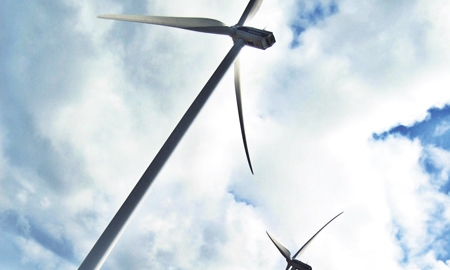Oil pollutes, is finite, and its price fluctuates immensely. With these three strikes against it, Aruba has decided to steer away from oil entirely, instead focusing on renewable energy sources and liquefied natural gas (LNG). The islands’ state-owned utilities companies, Utilities Aruba N.V. and its subsidiaries Elmar and WEB Aruba, are setting the pace in this quest.
What management is fully aware of is that the transition to a greener future does not lie solely in the hands of the government and the private sector, but in the hands of citizens, as well. “To implement a green or renewable energy policy, we need to create momentum and awareness. It is not only the wind turbines and solar panels, but it is a way of thinking as well,” says Dr. Franklin Hoevertsz, Managing Director of Utilities.
For this reason, education will be the main topic of the third annual Aruba Green Conference. At the first session, held in 2010, Al Gore was the chief speaker, thereby giving the newly established annual conference a huge kick-start in terms of publicity and esteem.
“At this year’s conference we will have to concentrate on and strengthen the educational part,” says Dr. Hoevertsz. “The energy policy consists of the supply side (machinery, wind farms, solar panels and so on) and the demand side (the people consuming energy). In that sense, we have a long way to go when it comes to energy consciousness.”
One of the campaigns that Utilities, along with Elmar and WEB Aruba, has implemented to generate public awareness concerning the importance of energy frugality is called “Hunto nos ta Spaar”, or Together We Will Save. Robert Henriquez, Director of Elmar, explains: “We got the involvement of the students. These kids are the future, and if we can start to make them understand how important it is to manage their daily utilities consumption, they, in turn, spread the word. They share what they know with their neighborhood. It is a positive chain reaction, people learning from each other. How they apply what they have learned will go a long way towards promoting responsible usage of utilities.”
“My critical comment on the renewable industry right now is that in terms of buffering energy storage, they are running behind.”
Dr. Franklin Hoevertsz, Managing Director of Utilities Aruba N.V. |
The campaign also includes TV commercials, energy and water audits, and the distribution of energy-saving light bulbs. Indeed, water is also a valuable resource – especially on a small island like Aruba – which the country is sourcing in innovative ways. Dr. Hoevertsz says that water desalination is being replaced by a seawater osmosis process, “which is even more efficient when it comes to producing potable water.”
Alfredo Rafine, Policy Advisor at Utilities Aruba, comments: “We had 7,000 cubic meters a day working and they are basically installing one right now from 24,000 tons per day. In Aruba we will use around 35,000 to 45,000 tons a day. We still need the multi-stage flash system because you cannot make industrial water from this. So we still have to use some steam, but it is not a lot.”
As for energy production, Aruba already has a 30 MW wind farm installed and has plans to double this with a second farm. Although there is no solar park yet, numerous buildings have solar panels installed and a pilot scheme has been conducted for social housing with solar film, according to Dr. Hoevertsz. “The figures obtained were very good. With regard to return on investment with solar film, it is good, so we have a reason to continue with that,” he says.
Aruba knows that it cannot go 100% green overnight, and that not only will it take time, it will also take considerable planning and technological advancement that takes into account the island’s conditions. “We try to keep a balance between our goals and the realities of the environment,” says Mr. Henriquez.
Fortunately, energy losses during transportation are at a minimum: 6.5%. What remains to be addressed with renewable energies, however, is the issue of storage, given Aruba’s grid isolation. Dr. Hoevertsz explains: “Continental countries have more flexibility when it comes to introducing renewable energies because the moment there is no wind, they can import some energy. We cannot. The moment the wind stops blowing, no electricity is being generated. We have to have a backup – either we store energy (which is a very expensive process right now) or we need another backup, one way or another. My critical comment on the renewable industry right now is that in terms of buffering energy storage, they are running behind.”
The managing director praises TNO’s presence on the island and believes that they can develop some breakthroughs and solutions in this field.

0 COMMENTS